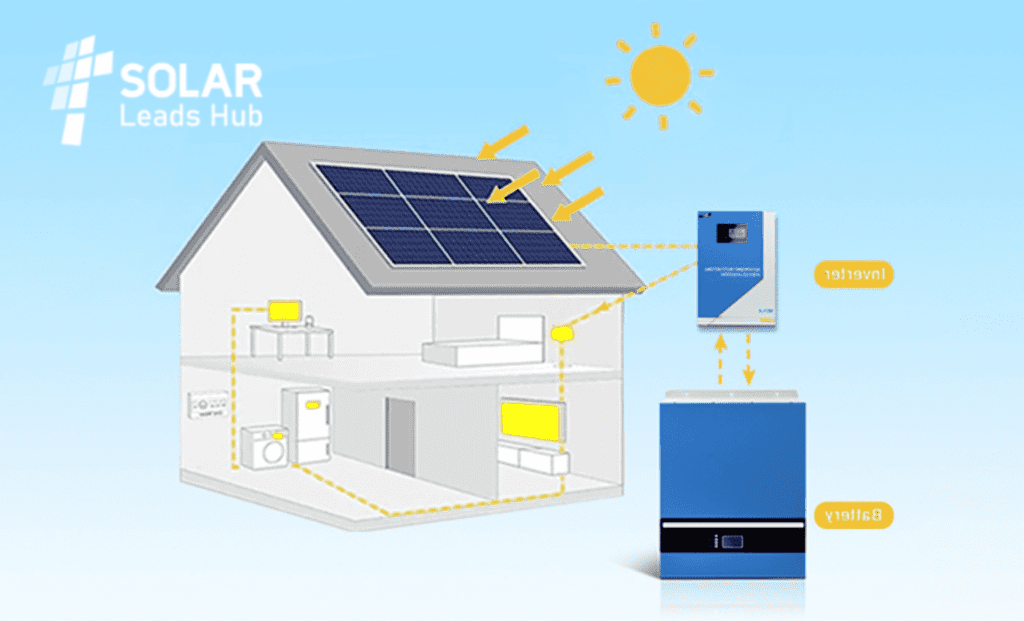
Solar panels are becoming increasingly popular because of their higher efficiency while generating almost zero waste, thus, making them environmentally friendly at the same time. The cost of solar power has declined in recent years; therefore, making solar panels a feasible option in the long run.
Now the question remains, how does it work?
There are no motors, no risk of fires, and it’s basically silent; therefore, zero noise pollution all at the same time! Aside from the surface of your roof, the solar panels don’t require additional space.
Without burning petroleum and discharging harmful gases into the atmosphere, solar panels are adequate for powering up your lively home at will. You could always produce some extra for your neighbors too, if you want.
Solar energy generation is quite simple, and, believe it or not, since the mid-1990s, the solar technology used in contemporary solar panels has stayed virtually constant to date.

Here, we’ll go over how solar panels produce and employ solar energy in the house.

Solar panels are generally installed on the roof with solar power systems, ranging from 15 to 25 panels.
Each solar panel comprises a string of 60 or 72 monocrystalline or polycrystalline silicon PV(photovoltaic) modules.
The PV rods enable the solar cells to confine solar energy and convert it to direct current or DC power.
The quantity of solar power generated is determined by the sun’s intensity and the layout of each solar panel.
Standalone solar panels are expected to produce approximately 300 to 350 watts individually under ideal conditions.

Because electrical appliances run on AC power, the DC power generated by the solar modules has to be converted until delivered to residential houses, which is when a solar inverter comes into play.
A single-string inverter is commonly observed in various households.
Before converting the total electricity generated from all solar panels, these string inverters, also known as central inverters, must receive it.
Solar inverters can be placed at the component level, with tiny magnetic ballasts connected to each solar panel for accomplishing the AC to DC conversion.
The inverter will first supply AC power to your circuitry at the voltage approx.
120V~240V, which will now power any voltage sources in your main circuit.
Grid-tied solar power systems, which are the most popular form of solar system installed in houses, allow you to use solar electricity, grid power, or a mix of the two.
Suppose the power produced by the inverter does not meet your household’s needs.
In that case, this scarcity can be covered by a mix of sources: partially from roof-mounted solar panels and partly from the electrical grid or network.

It’s normal to generate more solar electricity than your overall electrical demands with solar panels installed on your property.
The extra energy can be sent to the electric grid or power network through the utility meter when this happens.
The utility meter has to be a particular one that can track how much power you can export to the grid and how much electricity you use from it.
Now you might be thinking about what happens at night when there’s no sunlight to convert energy. Let’s find out.
Solar panels require sunshine to produce energy; as a result, a grid-tied solar panel setup is the most conventional form that uses electricity supplied by the utility provider to power up your residence at night.
Fortunately, you won’t be paying for that much of the electricity you use at night while living in a state with 1/1 smart meters, which is presently 76% of states.
The extra power your system generates throughout the day is utilized to offset the expense of your nighttime electricity purchases.
When combined with storage, solar energy will assist in lowering electricity costs, contribute to a more robust electrical grid, create employment and stimulate economic growth, produce backup power for nights and outages, and operate at equivalent efficiency on big and small ranges. Wireless connection and advanced online monitoring are available on many high-quality inverters supplied by various commercial and Solar Panel installers, ready to prepare feasible solar quotes.
To tackle the ongoing energy crisis and contribute to a better future, solar power is the best pick. Get yours today and be a part of the wave of change.
